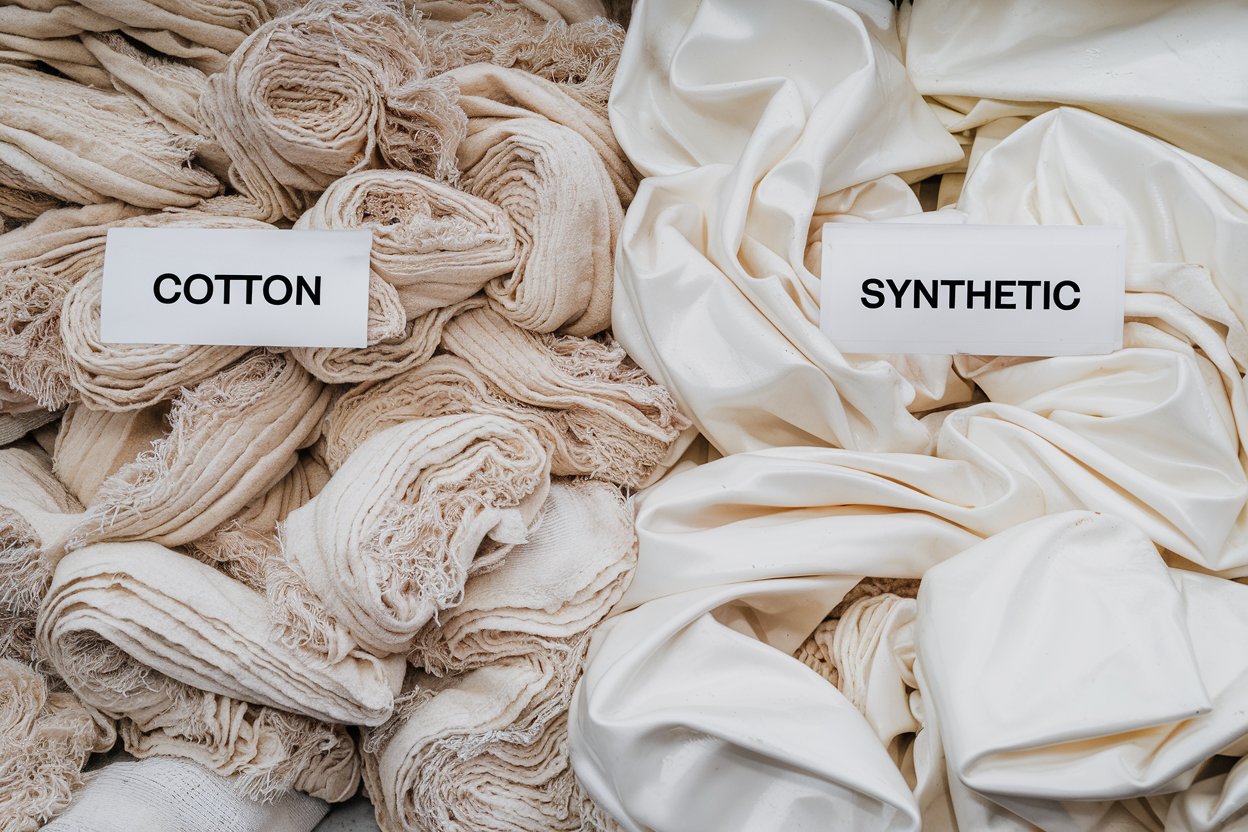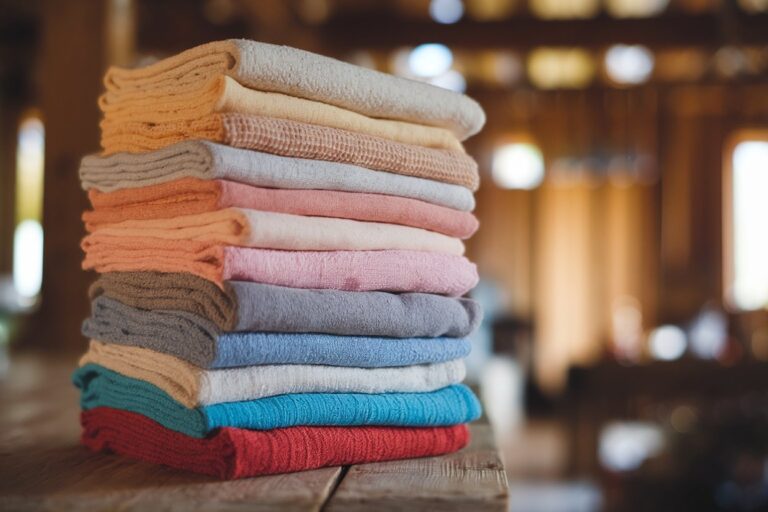Cotton and Synthetic Rags: What’s the Best Option for Your Business?
In many business settings, choosing between cotton and synthetic rags can impact everything from cost and environmental footprint to effectiveness. Industries ranging from automotive to hospitality rely on the right kind of cleaning and utility rags to maintain a clean, safe, and productive environment. In this guide, we’ll break down the differences between cotton and synthetic rags, focusing on key factors like durability, cost, and environmental impact to help you decide the best fit for your business needs.
What are Cotton Rags?
Cotton rags are typically made from natural cotton fibers. They’re well-known for their soft, absorbent nature, making them highly effective for cleaning, polishing, and dusting. Commonly used in industries like healthcare, hospitality, and manufacturing, cotton rags are prized for their gentleness on surfaces and compatibility with a range of materials, including wood and metal. In some cases, cotton rags are repurposed from textiles, which adds an eco-friendly dimension to their use.
What are Synthetic Rags?
Synthetic rags are made from man-made materials, primarily polyester or nylon. These rags are often favored in industrial and automotive settings due to their strength and durability. Synthetic fibers are designed to withstand tough conditions, including exposure to harsh chemicals and repeated washing. Many businesses appreciate synthetic rags for their longevity and ability to handle heavy-duty cleaning tasks that might wear out cotton rags more quickly.
Key Differences Between Cotton and Synthetic Rags
| Feature | Cotton Rags | Synthetic Rags |
|---|---|---|
| Absorption | High; excellent for spills and liquids | Moderate; works well for wiping solid surfaces |
| Durability | Medium; wears down with heavy-duty use | High; resistant to harsh conditions |
| Cost | Higher due to natural material | Generally lower and cost-effective |
| Environmental Impact | Biodegradable, renewable | Non-biodegradable, longer-lasting waste |
| Softness | Soft, gentle on sensitive surfaces | Can be coarse or smooth, less gentle |
Absorption Rate: Cotton And Synthetic Rags
Cotton rags are highly absorbent due to their natural fiber structure, making them excellent for liquid cleanup in industries such as hospitality and food services. Synthetic rags, though not as naturally absorbent as cotton, can still handle light cleaning tasks effectively. They are often favored in areas where absorbency is less critical, and durability is the priority, such as in manufacturing.
Durability and Longevity
Cotton rags are durable but may wear down more quickly when exposed to heavy-duty use and repeated washing. Synthetic rags are known for their long lifespan, especially under tough conditions, making them ideal for environments where regular, intensive cleaning is required. While cotton rags may need to be replaced more frequently, they’re better for sensitive surfaces.
Environmental Impact of Cotton and Synthetic Rags
Cotton, as a natural material, is biodegradable and renewable, giving it a smaller environmental footprint than synthetic alternatives. However, cotton production itself requires significant water and energy. Synthetic rags, often made from petroleum-based products, are non-biodegradable and may contribute to environmental pollution if not properly managed. Businesses aiming for sustainability may favor cotton for its eco-friendly decomposition, though some synthetic rags are now made from recycled materials.
Cost Comparison
In terms of cost, synthetic rags are typically more affordable than cotton due to lower production expenses. Cotton rags, being a natural product, are priced higher but may offer a softer, higher-quality feel that’s preferable in certain industries, such as hospitality. The lifespan of cotton and Synthetic rags both type also impacts cost: while synthetic rags last longer in intense applications, cotton rags may require more frequent replacement, adding to long-term expenses.
Health and Safety Factors
Cotton rags are hypoallergenic, making them suitable for environments with high sensitivity requirements, like healthcare. Synthetic rags, on the other hand, may contain chemicals or produce lint, which can be a concern in certain settings. For sensitive applications, cotton rags are often preferred to avoid allergens and reduce the chance of chemical interactions.
Maintenance and Care for Rags
To prolong their life and effectiveness, both cotton and synthetic rags require proper maintenance. Cotton rags can be machine washed but may shrink over time, while synthetic rags are generally more resistant to wear and don’t shrink. The following table provides a quick guide:
| Rag Type | Washing Method | Drying | Lifespan Tips |
|---|---|---|---|
| Cotton | Machine washable; gentle cycle | Air or machine dry | Avoid bleach; handle carefully |
| Synthetic | Machine washable; sturdy cycle | Air or machine dry | Store in a dry place; replace less often |
Popular Uses of Cotton Rags in Business
Industries that require soft, absorbent materials often turn to cotton rags. They are particularly popular in:
- Cleaning and Janitorial Services: For streak-free cleaning on glass and polished surfaces.
- Automotive: To safely wipe down paint and polish surfaces.
- Food Service: Excellent for quick, effective cleanup in kitchens and dining areas.
Popular Uses of Synthetic Rags in Business
Synthetic rags shine in more intense cleaning environments where durability is essential. Ideal uses include:
- Manufacturing: Cleaning machinery and equipment exposed to oil and grease.
- Automotive: Perfect for tough jobs requiring solvents or chemical cleaners.
- Industrial Cleaning: Removing debris and handling rough surfaces in construction and similar fields.
Case Studies: Business Success Stories Using Cotton Rags
Many businesses have seen positive results from using cotton rags. For example:
- Food Service Chains: National chains use cotton rags to reduce lint and increase absorbency for quick spill cleanup.
- Auto Detailers: High-end detailing services often prefer cotton for delicate finishes on luxury vehicles.
Case Studies: Business Success Stories Using Synthetic Rags
Synthetic rags also have a strong track record in heavy-duty applications:
- Manufacturing Plants: Synthetic rags are used to handle harsh cleaning requirements and chemical exposure.
- Warehousing: Distribution centers report a longer lifespan and cost savings with synthetic rags.
Deciding Factors: Choosing the Right Rag for Your Business
Consider the following factors when choosing between cotton and synthetic rags:
- Budget: Synthetic rags are typically more affordable.
- Environmental Goals: Cotton is more eco-friendly and biodegradable.
- Intended Use: Choose cotton for delicate surfaces and synthetic for rugged environments.
- Maintenance Needs: Synthetic rags require less frequent replacement.
Conclusion
Both cotton and synthetic rags have clear advantages and limitations. Cotton rags are absorbent, soft, and eco-friendly, making them ideal for businesses with sensitive cleaning needs and a focus on sustainability. Synthetic rags are durable, cost-effective, and suitable for heavy-duty applications where longevity is a priority. Understanding your business’s needs, budget, and environmental stance will help guide your choice.







